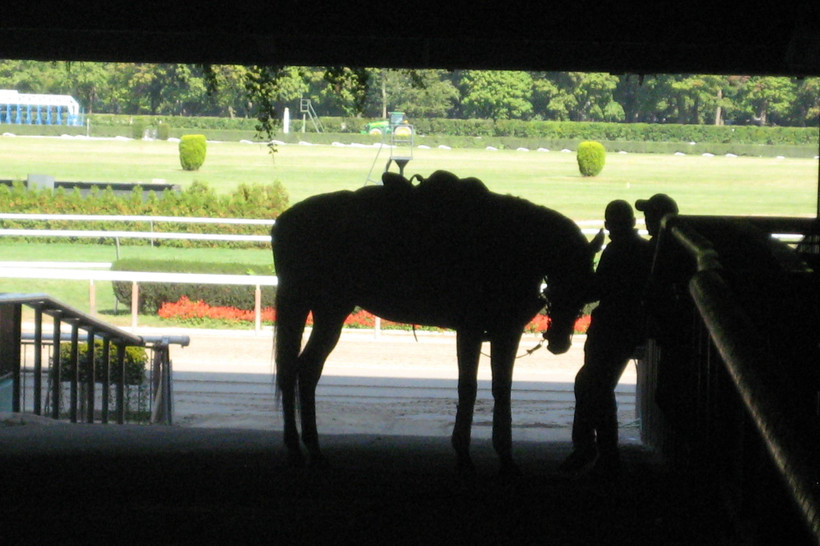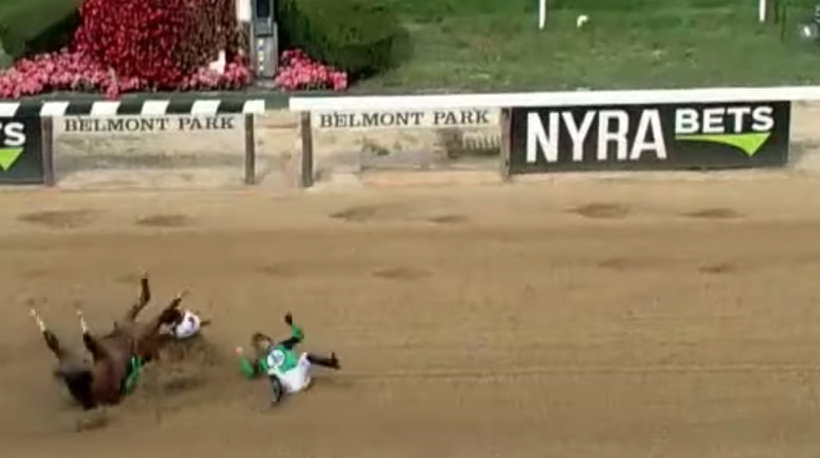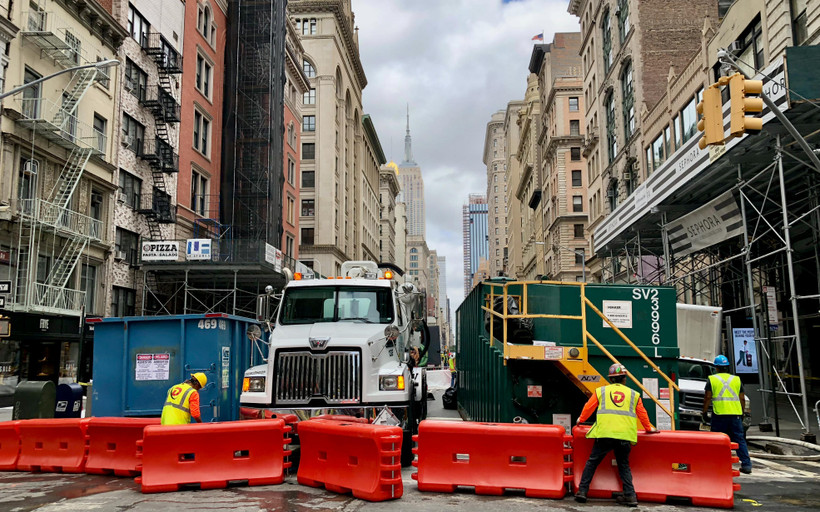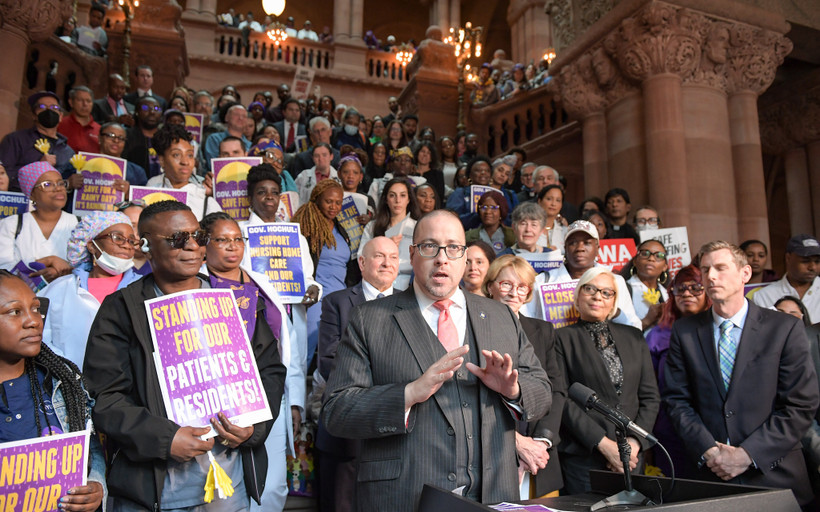The New Belmont Park Could Become the Country’s Deadliest Track for Horses
Dozens of horses die at the Long Island track each year. Governor Hochul — and now the state legislature — want to give it a state-funded renovation.

- Kathy Hochul Bets Half a Billion on Horse Racing. Will the Industry Pay Her Back?
- Hochul Projects Horse Racing Renaissance, Declines to Share Evidence
- Can Half a Billion Dollars Save New York Horse Racing? We Spoke With the Man Who Says Yes.
- Half a Billion in the Bank — And Next to No One in the Stands


Low-wage manual laborers can sue to make their bosses pay them weekly. Hochul’s late-breaking budget addition may undermine that right.
New York’s transparency watchdog found that the ethics commission violated open records law by redacting its own recusal forms.
New York has one of the weakest consumer protection laws in the country. This year’s state budget may change that.
Hochul’s proposed Medicaid cuts include $125 million from Health Homes, a program that connects the neediest New Yorkers with medical care, food assistance, and more.
One in five kids in New York live in poverty. Legislators are pushing Hochul to fulfill her promise to cut that rate in half.
The Assembly and Senate want to beef up labor standards and farmland protections for clean energy projects. Developers say that would slow down the energy transition.

